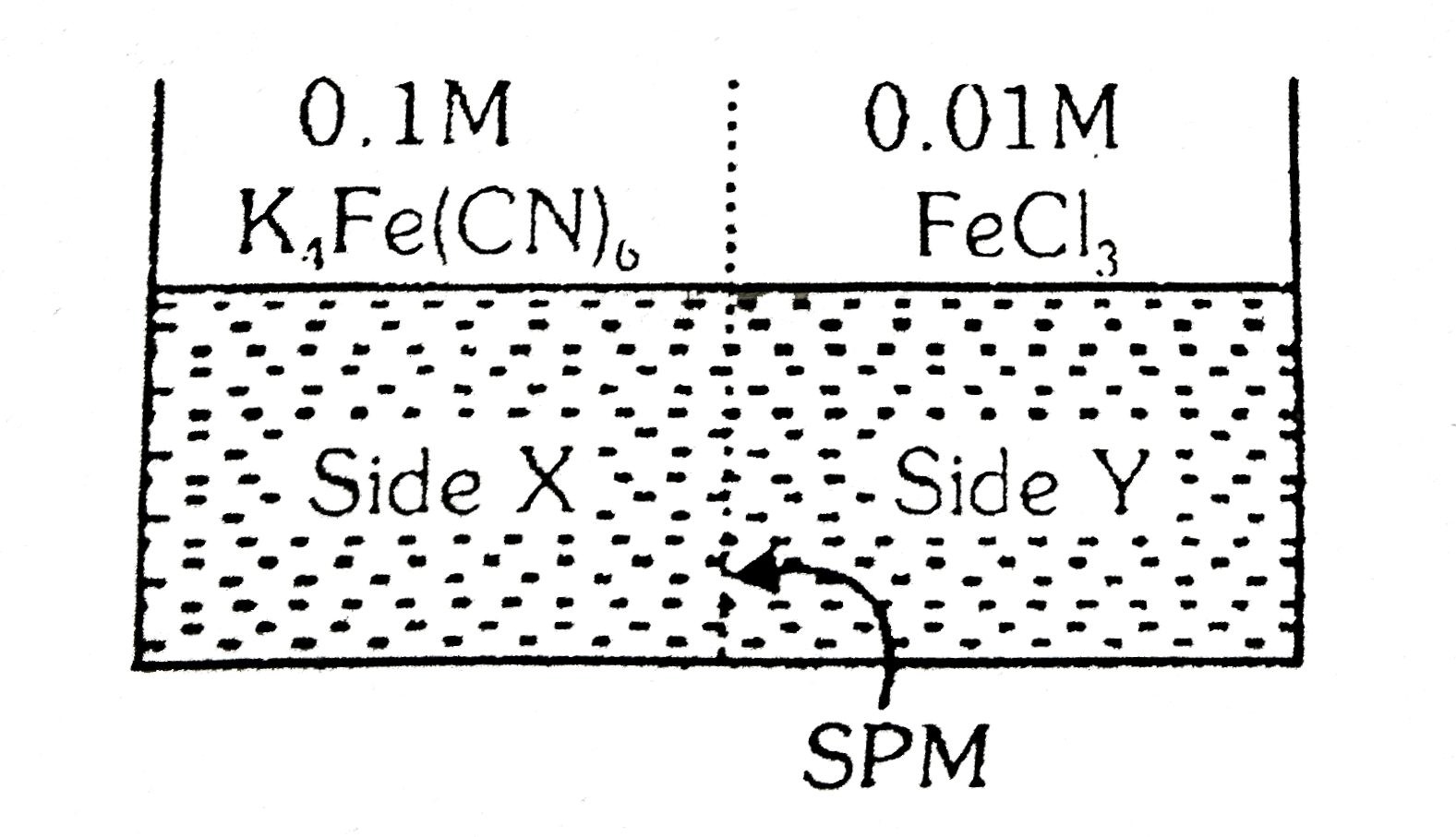X3Y2(i=5) when reacted with A2B3(i=5 in aqueous solution gives brown colour. These are separated by a semipermeable membrane AB as shown. Due to oxmosis there is :

a.brown colour formation in side X
b.brown colour formation in side Y
c.formation in both of the sides X and Y
d.no brown colour formation
brown colour formation in side X
brown colour formation in side Y
formation in both of the sides X and Y
no brown colour formation
The correct Answer is:d
Step by step video & image solution for X_(3)Y_(2)(i=5) when reacted with A_(2)B_(3)(i=5 in aqueous solution gives brown colour. These are separated by a semipermeable membrane AB as shown. Due to oxmosis there is : a.brown colour formation in side X b.brown colour formation in side Y c.formation in both of the sides X and Y d.no brown colour formation by Chemistry experts to help you in doubts & scoring excellent marks in Class 11 exams.
Updated on:21/07/2023Topper's Solved these Questions
- DILUTE SOLUTIONBook:NARENDRA AWASTHI ENGLISHChapter:DILUTE SOLUTIONExercise:leval-02
Explore 26 Videos
- DILUTE SOLUTIONBook:NARENDRA AWASTHI ENGLISHChapter:DILUTE SOLUTIONExercise:leval-03
Explore 23 Videos
- CHEMICAL EQUILIBRIUMBook:NARENDRA AWASTHI ENGLISHChapter:CHEMICAL EQUILIBRIUMExercise:Match the column
Explore 1 Video
- ELECTROCHEMISTRYBook:NARENDRA AWASTHI ENGLISHChapter:ELECTROCHEMISTRYExercise:Subjective problems
Explore 14 Videos
Similar Questions
FeCl3 on reaction with K4[Fe(CN)6] in aqueous solution gives blue colour.

These are separated by a semipermeable membrane AB as shown. Due to osmosis there is:
View SolutionFeCI3 on reaction with K4[Fe(CN)6] in aqueous solution gives blue colour.

These are separated by a semipermeable membrane AB as shown. Due to osmosis there is:
View SolutionFeCI3 on reaction with K4[Fe(CN)6] in aqueous solution gives blue colour.

These are separated by a semipermeable membrane AB as shown. Due to osmosis there is:
View SolutionFeCl3 on reaction with K4[Fe(CN)6] in aqueous solution gives blue colour. These are separated by a semi-permeable membrane AB as shown. Due to osmosis, there is

View SolutionReddish brown colouration when neutral FeCl3 is added to the CH3COOΘ aq solution is due to the formation of (a) ____.
View SolutionAn aqueous solution of inorganic compounds (X) gives following reactions.
(i) With an aqueous solution of barium chloride a precipitate insoluble in dilute HCl is obtained.
(ii) Addition of excess of Kl gives a brown precipitate which turns white on additon of excess of hyposolution.
(iii) With an aqueous solution of K4[Fe(CN)6], a brown coloured precipitate is obtained.
Identity (X) and gives equation for the reaction for (i),(ii) and (iii) observations.
View SolutionStatement-1: 3M solution of alkali metal in liquid ammonia has copper bronze colour.
Statement-2: copper bronze colour is due to the formation of metal cluster.
View SolutionA solution 'X' give orange colour when a drop of it falls on pH paper, while another solution 'Y' gives bluish colour when a drop of it falls on pH paper. What is the nature of both the solutoins? Determine the pH of solution 'X' and 'Y'?
View SolutionBrown ppt ,of Mn(OH)2 on boiling with PbO2 and cone HNO3 yields a pink colouration on dilution due to the formation of
View Solution(i)A black coloured compound (B) is formed on passing H2S through the solution of a compound (A) in NH4OH
(ii)(B) on treatment with HCl and potassium chlorate or aquaregia gives (A)
(iii)(A) on treatment with KCN gives a buff/reddish-brown coloured precipitate which dissolves in excess of this reagent forming a compound (C).
(iv)The compound (C) is changed into a compound (D) when its aqueous solution is boiled in air.
(v)The solution of (A) was treated with excess of NaHCO3 & then with bromine water. On cooling & shaking for some time, a green colour of compound (E) is formed.No change is observed on heating.
Identify (A) to (E) and give chemical equations.
View Solution